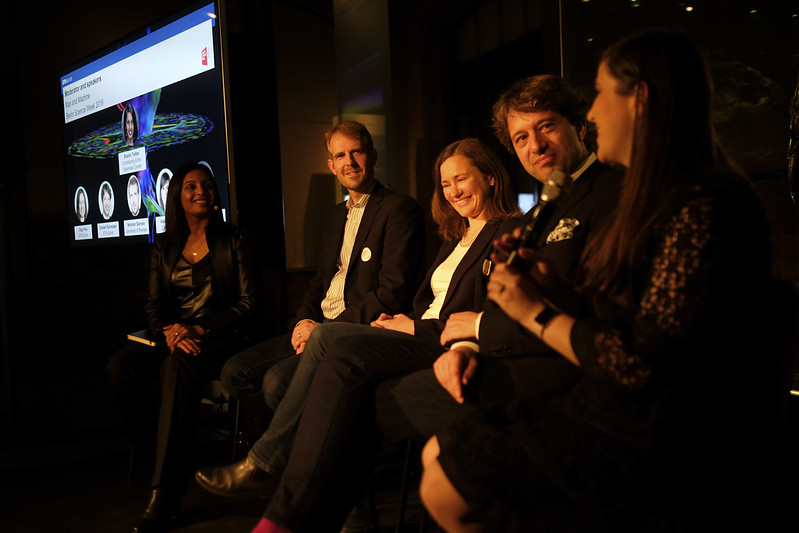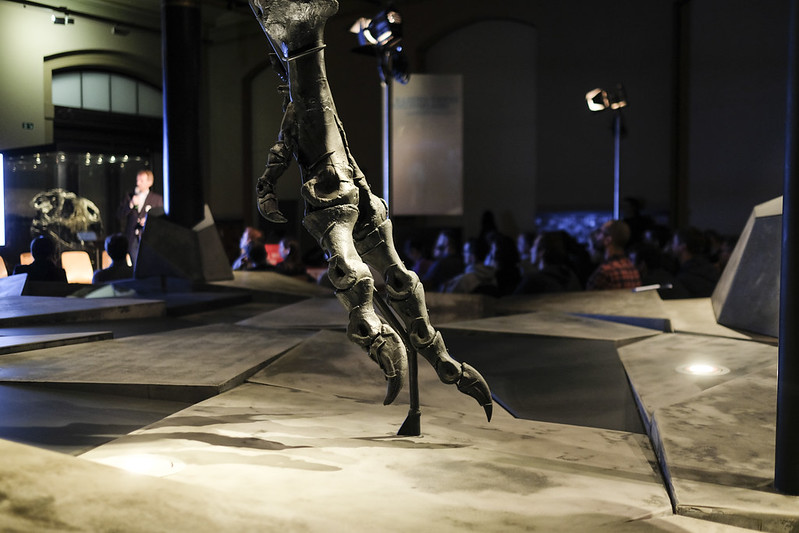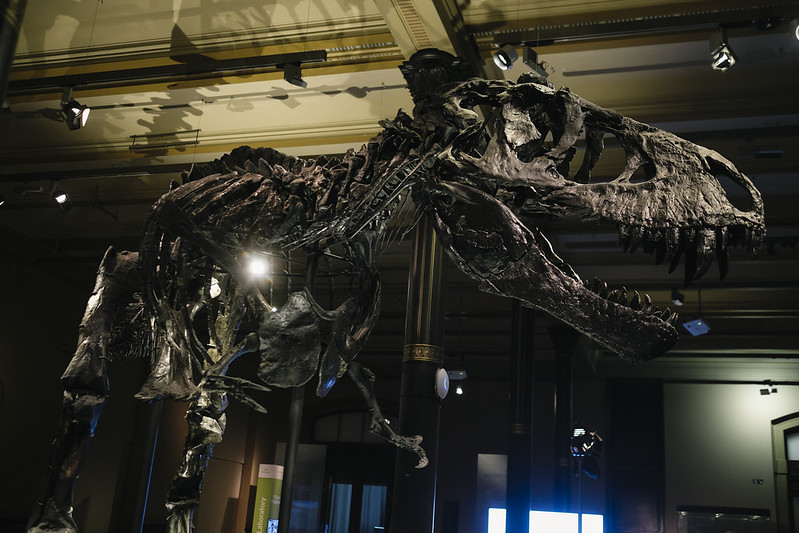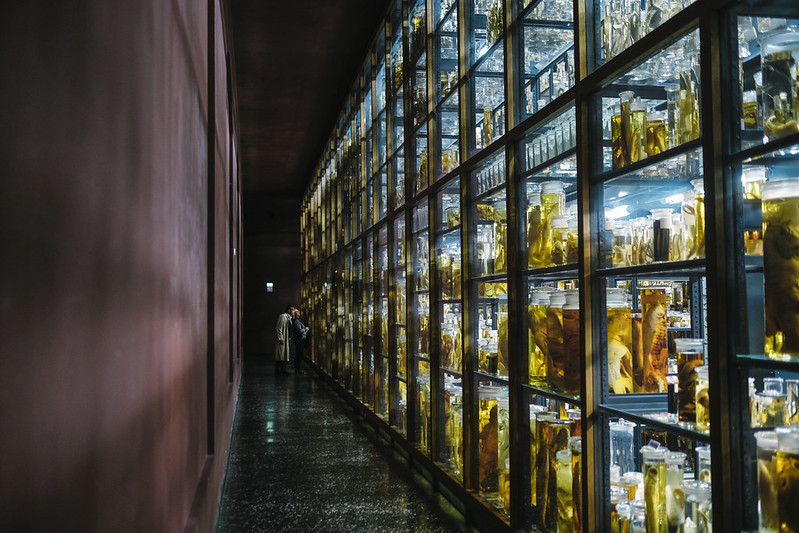The Man and Machine event followed closely on the heels of the previous event around the latest advances against antimicrobial resistance. So, there was palpable interest and energy among the audience who had heard the last event end on the electrifying note of whether and how we could use AI to design molecules which could literally kill two kinds of cells, cancer and microbes.
44 Petabytes and a sliver of a slice of the AI pie!
by Shalini Trefzer, 19.12.2019

Our panelists f.l.t.r.: Shalini Trefzer, Norman Sieroka, Olga Fink, Gisbert Schneider, Alexis Block (photo credit: Jan Welchering/ETH Zurich)
Last week, Shalini Trefzer wrote about her impressions of the RETHINK Antibiotics event during Berlin Science Week 2019. Today she reflects on the second ETH Zurich event she moderated that day about Artificial Intelligence and Robotics.

Photo credit: Jan Welchering/ETH Zurich
The ensuing discussion and talks around what other advances are underway using machine learning, artificial intelligence, and robotics captured our collective imagination. A topic I was personally eager to learn more about as I prepared ahead of the event with the experts, Olga Fink, Gisbert Schneider, Norman Sieroka, and Alexis Block, was what can be done to solve the persistent issues surrounding data. As a side note, I learned in my preparation that the size of the data universe is 44 Petabytes. Yeah, I couldn’t tell you what that means, either! But, apparently, it equals 40 times more bytes than there are stars in the observable universe. And, yet, as a practitioner who grapples with the enterprise customer experience with the application of AI in industry, I know that the reality on the ground is not as simple as having perfectly sized and composed data sets which can be leveraged for machine learning. Hearing Olga talk about transferring the experiences and learnings from one system to another or from one component to the whole fleet of assets was fascinating for me personally.
While all the advances presented in the event were extremely important to the progress of AI applications, as a listener, there’s always something which sticks with you long after the talk. The three things that remained with me are:
1) California to Berlin, most humans will take all the hugs they can get! Even if it’s from a robot.
2) Whether it is the process of acquiring knowledge in science or discovering new molecules or solving the problem of predicting rare faults in manufacturing processes, it’s important we are precise in describing what we are doing and share both, the possibilities and the limitations with clarity.
3) And, finally, even though we didn’t get a chance to discuss this aspect, to engage in our individual and collective capacities to ensure that the benefits of the progress in artificial intelligence are accessible to all.
Call me fanciful, but this day felt like quite the continuum to me: of what was, is, and will be. It was spent visualising the future - through the lens of hard-won, on-going scientific discovery and development - while we were quite literally bracketed by two of the best-preserved skeletons of the Tyrannosaurus Rex in the world!

T- Rex Tristan (photo credit: Jan Welchering/ETH Zurich)

An impression of our beautiful location at the Museum für Naturkunde, Berlin (photo credit: Jan Welchering/ETH Zurich)

About the author
Shalini Trefzer serves as Executive Director of the Think Tank, World in 2050, of the global affairs media network the Diplomatic Courier. Married to a Swiss and with a growing daughter, she’s lived in the Basel region since 2008 and had a long career in Fortune 500 companies. Shalini is in awe of the mountains and recently learned downhill skiing.
